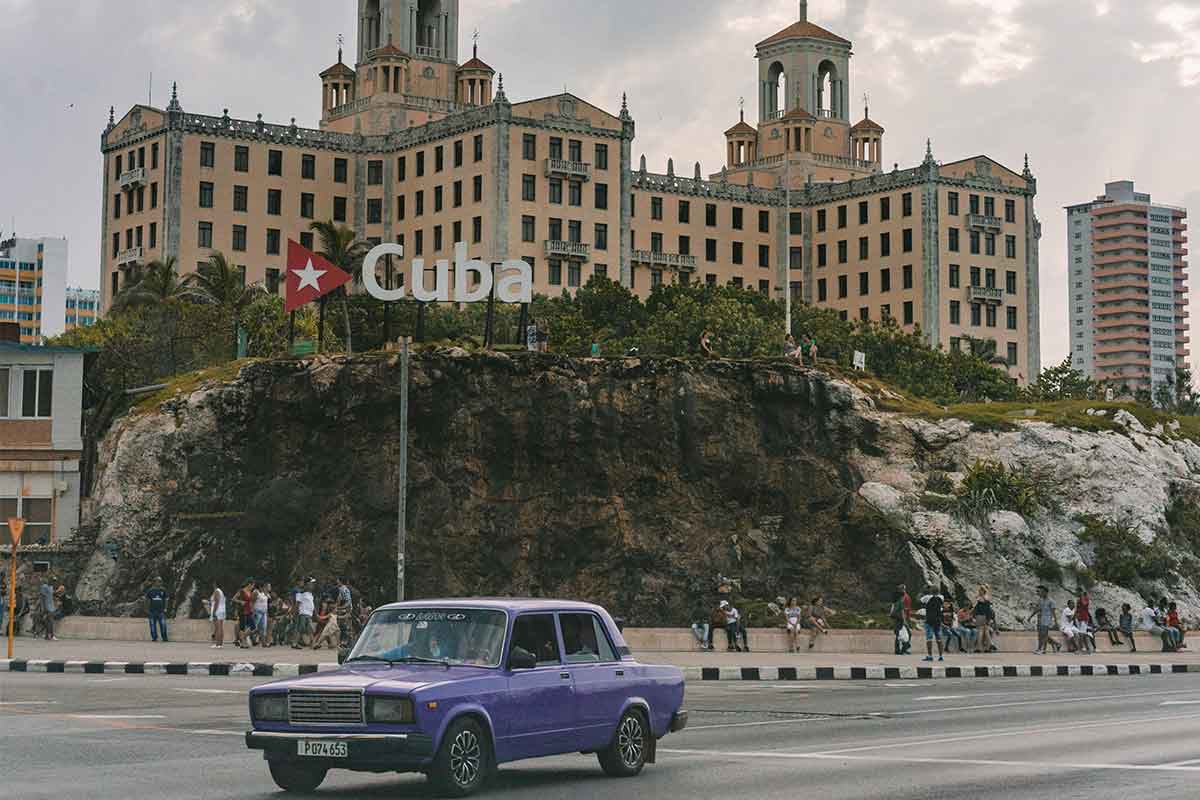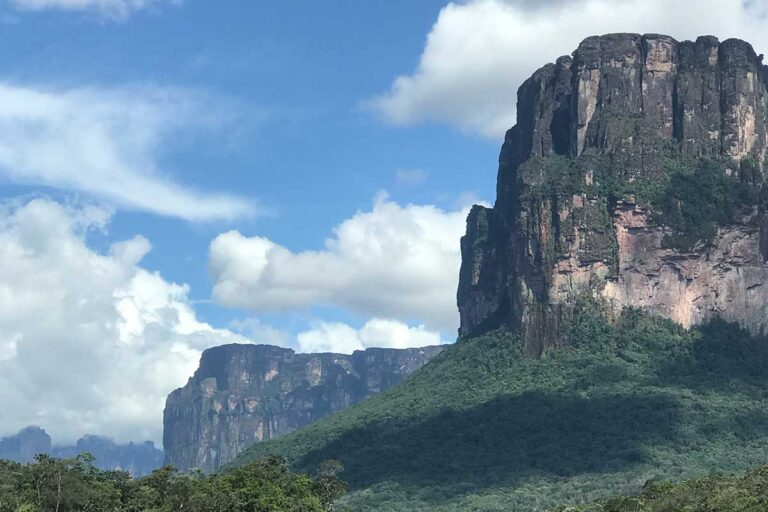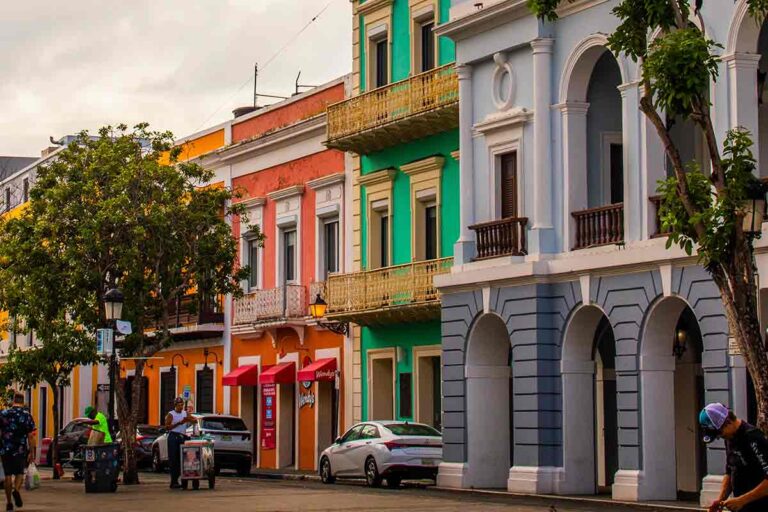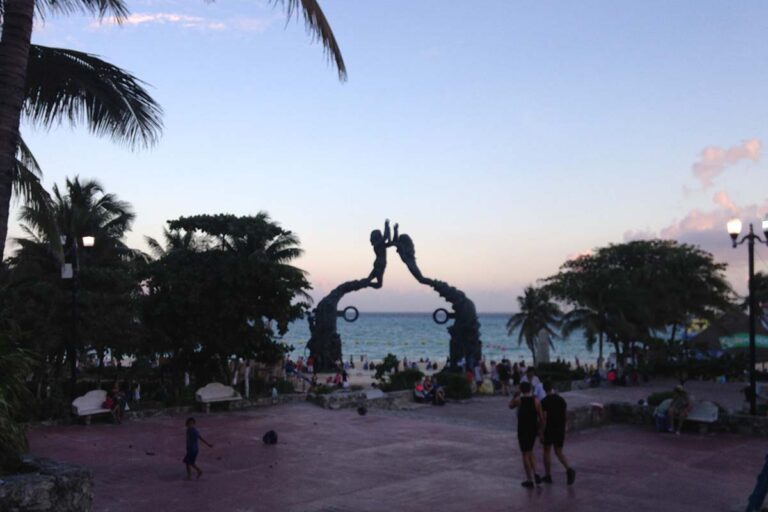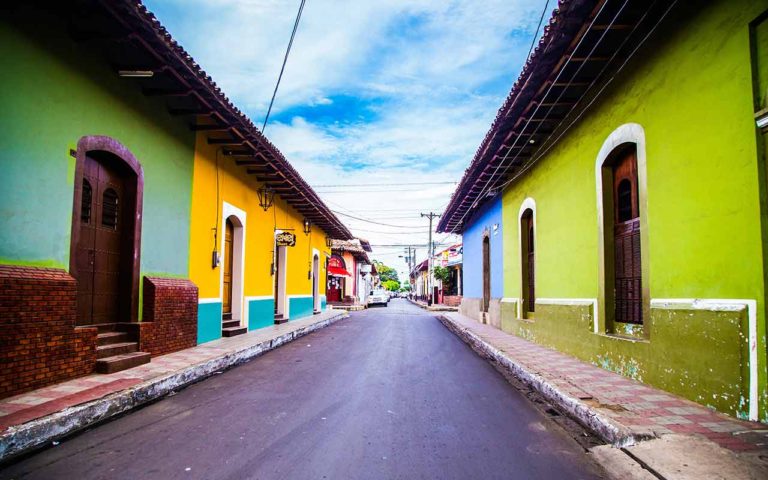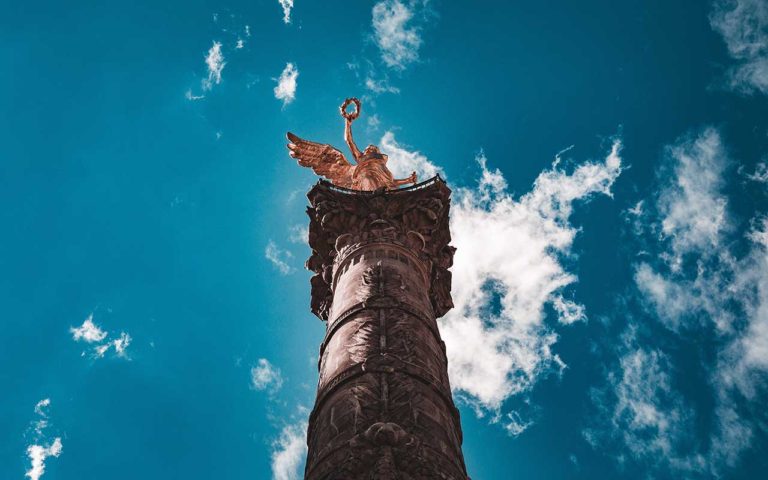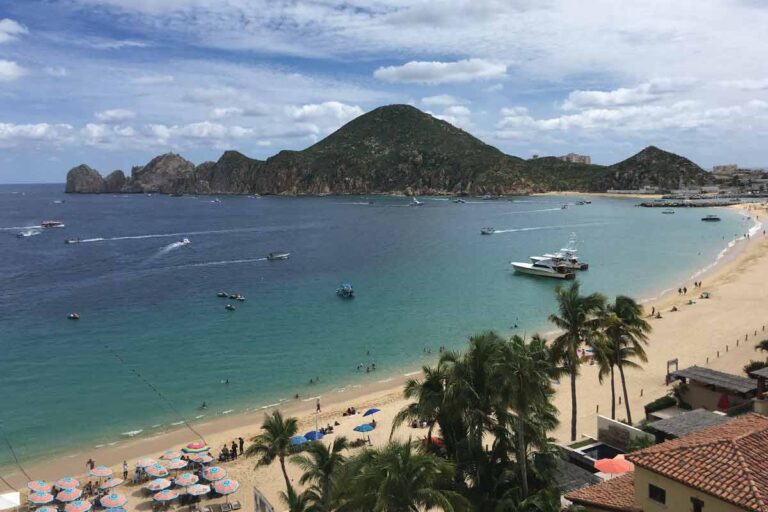Backpacking Cuba Itinerary
Welcome to this backpacking Cuba itinerary.
When people are browsing for new places to visit, they usually brush past Cuba because they think it’s too dangerous or there’s nothing there worth seeing. Both assumptions are wrong.
In this Cuba travel itinerary, we will give you a glimpse of all the wonderful things you can do in this exciting country.
Cuba makes for a unique travel experience and you can easily spend 1 to 2 weeks in Cuba soaking it all in!
Cuba Itinerary
With this backpacking Cuba itinerary, we are going to help you narrow down all the options so you can make the most out of your time in Cuba.
Is Cuba worth visiting?
Cuba is one of the most interesting countries you can visit on our blog.
Due to its varied past and present, the country has an extremely different feel going for it.
From dual currencies to its own Caribbean rhythm, you’ll find lots of authenticity here.
Also, home to some gorgeous beaches, colonial towns, and some of the best cigars on earth, Cuba is definitely not one to be missed!
BLATAM backpacking data:
- 💰 Currency: Cuban Peso
- 🇨🇺 Language: Spanish
- 🌎 Population Size: 11.3 Millionn
- 📍 Best Secret: María La Gorda
- 🍴 Eat: Sandwich Cubano
- 🥛 Drink: Cuba Libre, Mojito
- 💸 Average Daily Budget: $20-25
Is Cuba Safe?
Cuba is generally safe to visit. However, you will be exposed to crimes such as pickpocketing, theft, and currency scams.
Our basic tips for safety in Cuba include:
- Dress to blend in and don’t flaunt your valuables.
- Don’t drink water from the tap.
- Research currency scams and avoid them.
- Don’t carry more cash than you need.
- Avoid slums (see our Havana safety guide for more) + extra research.
- Don’t make too much of a habit of walking around late at night, especially not alone.
Unfortunately, that’s true for many of the places to visit around the world, so it shouldn’t be a deal-breaker.
As long as you take precautions, plan your trip well, and practice common sense, you will be able to avoid these risks. We recommend bringing this safe Money Belt to keep all of your valuables secure
Safety Facts about Cuba
- The best way to evaluate safety is by looking at the 2020 Global Peace Index. This measures the state of peace of each country in comparison with the rest of the World, by evaluating both tangible and qualitative indicators.
- Cuba ranked as 86th out of the 163 nations measured, which is similar to that of fellow Latin nations Bolivia and Ecuador. For comparison, The United States ranked as 121st.
- In general Cuba is a pretty safe country to explore. Popular touristic destinations such as Varadero and Trinidad hardly have any issues, as these are more developed and have more openness towards foreigners. Havana really depends on where you are visiting.
- The Old Havana in general is quite safe, although at night it’s best to not be walking around late at night. Miramar is another safe district to stay in the capital too. Another popular destination is Santiago de Cuba, which is located in the south of the island. This city is generally pretty safe due to a good police presence. The only cautions here are to not wear flashy accessories as these will make you a target for theft.
Having a good time in Cuba is possible and later on, we will provide helpful travel safety tips!
Cuba Itinerary
There are so many amazing places to visit in Cuba and today we’ll focus on the best spots you won’t want to miss.
If you are wondering how to get to Cuba and thinking of backpacking Mexico or spending time there, Yucatan makes the perfect place to fly to Cuba from.
Havana
Havana should be your first stop! This is the kind of city you should explore on foot, so it’s perfect for a Cuba backpacking itinerary.
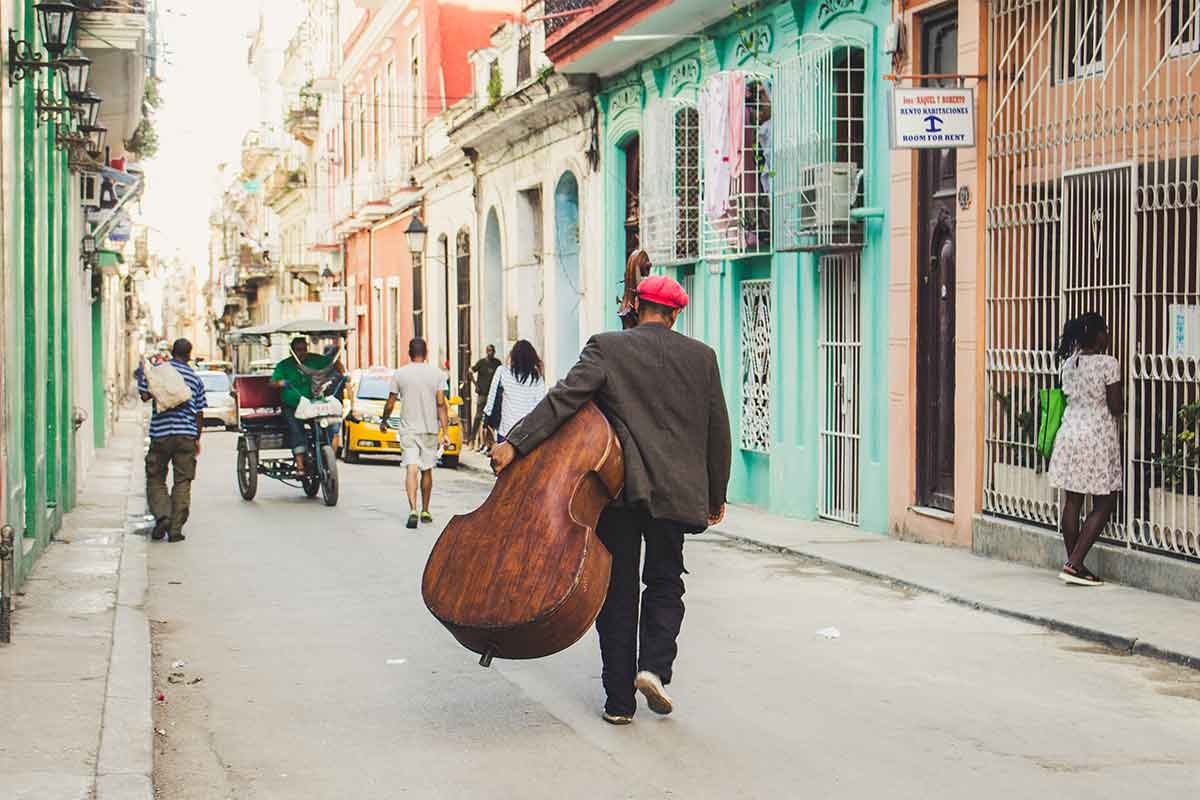
You can walk through the old town and take in the beautiful crumbling buildings, visit the Plaza de la Revolución, go to the Capitol Building and take a tour inside if you’d like, visit tobacco factories, and so much more.
Havana is also full of interesting museums, such as the Museo de la Ciudad, the Museo Nacional de Bellas Artes, and the Museo de la Revolución.
Viñales
Viñales is a town located in the west of the country and it’s the ideal place to explore the Cuban countryside.
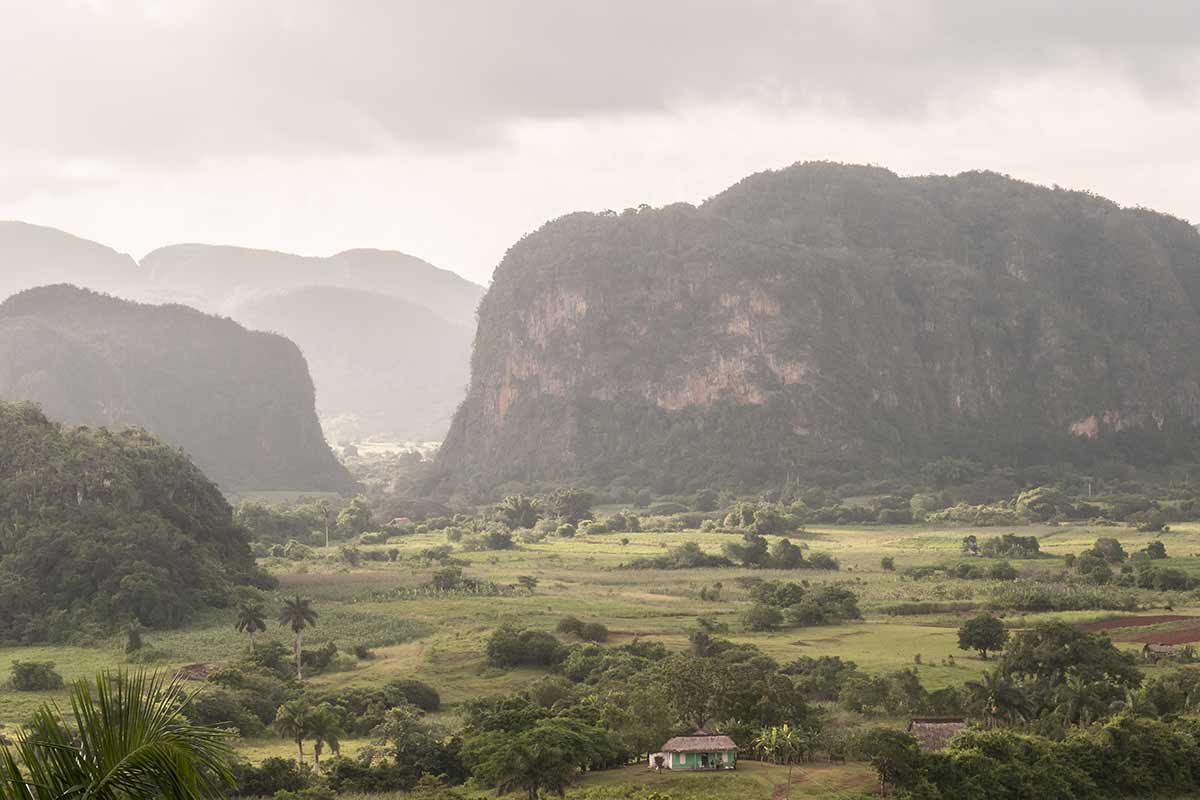
If you’re backpacking in Cuba, you simply can’t miss the countryside.
At Viñales, you can visit tobacco plantations and see how the world-famous cigars are made, visit the Mural de la Prehistoria, which is a mural on a cliff and it’s the second-largest one on earth, go to Cueva del Indio to walk through the caves, and so much more.
Given you’ll be getting off the grid here, you’ll want to carry some solid hiking boots. We recommend this sturdy pair for the guys, and these solid shoes for the ladies.
Cienfuegos
Cienfuegos is a must in any Cuba travel itinerary because it’s very underrated. There’s not much to do in the city itself, except visit the main square and watch the sunset from Punta Gorda.
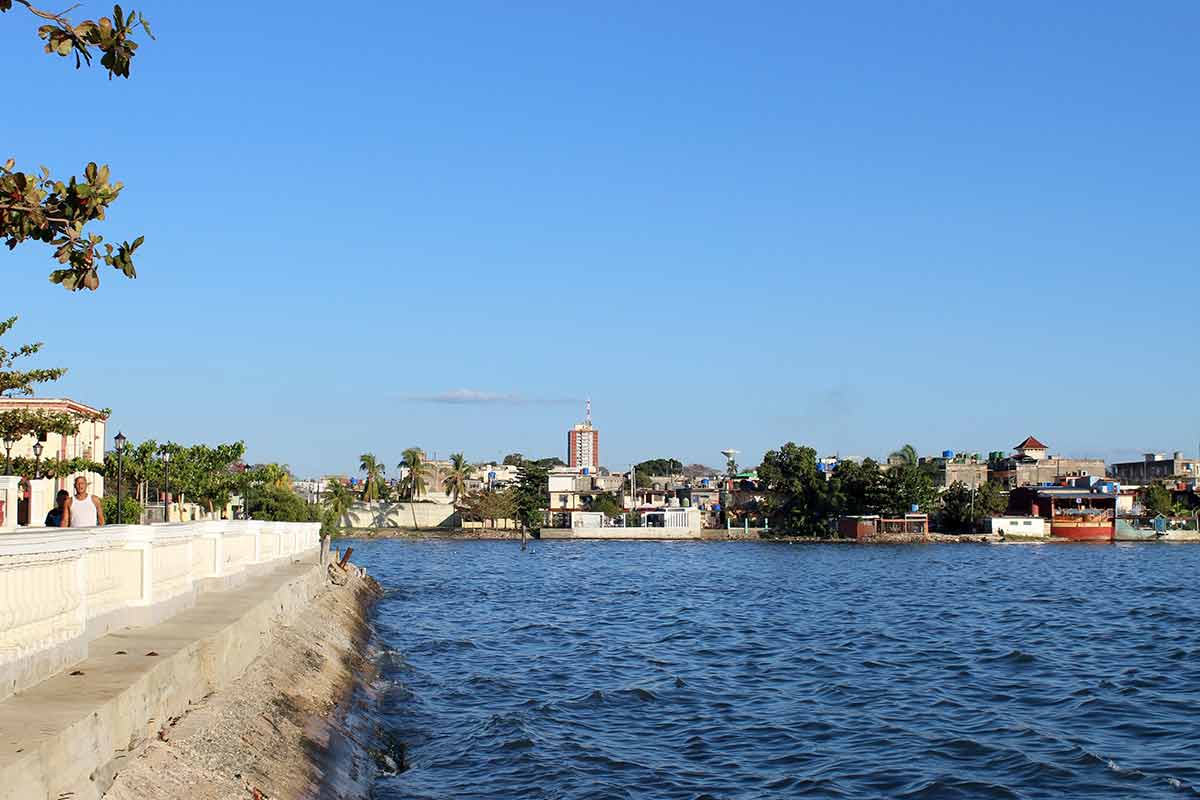
However, the real reason to visit Cienfuegos is to visit the area that surrounds the town. You can go to Laguna Guanaroca, a peaceful lake, visit El Castillo, which is a lovely fort, go to El Nicho waterfalls, and more.
Trinidad
Whether you’re spending 1 week in Cuba or 2 weeks in Cuba, make time to visit Trinidad. It is a beautiful place and though it’s smaller than Havana, it can get quite busy. The small-town charm of Trinidad is difficult to resist!
You can walk around town and admire the buildings and scenery, go to the Belltower in the Municipal History Museum, enjoy the nightlife around Casa de la Música, visit Las Avalas, the most popular nightclub in Trinidad, which is in a cave, and so much more!
Santa Clara
Next up on this Cuba travel itinerary, we have Santa Clara. This is a small city full of vibrant architecture and it’s the perfect place to soak in the daily life of Cubans. One of the best things to do here is take a walking tour of the city!
Start at Parque Leoncio, go to Vidal, visit the Santa Clara Theatre, go down Avenida Liberación to see the Tren Blindado and a statue of Che Guevara.
Then, walk to Loma del Capiro to enjoy great views and visit the Che Guevara Mausoleum across town.
Varadero
Last but not least, we have Varadero. This is the closest point in Cuba to the US, so it’s worth including in your Cuba travel itinerary.
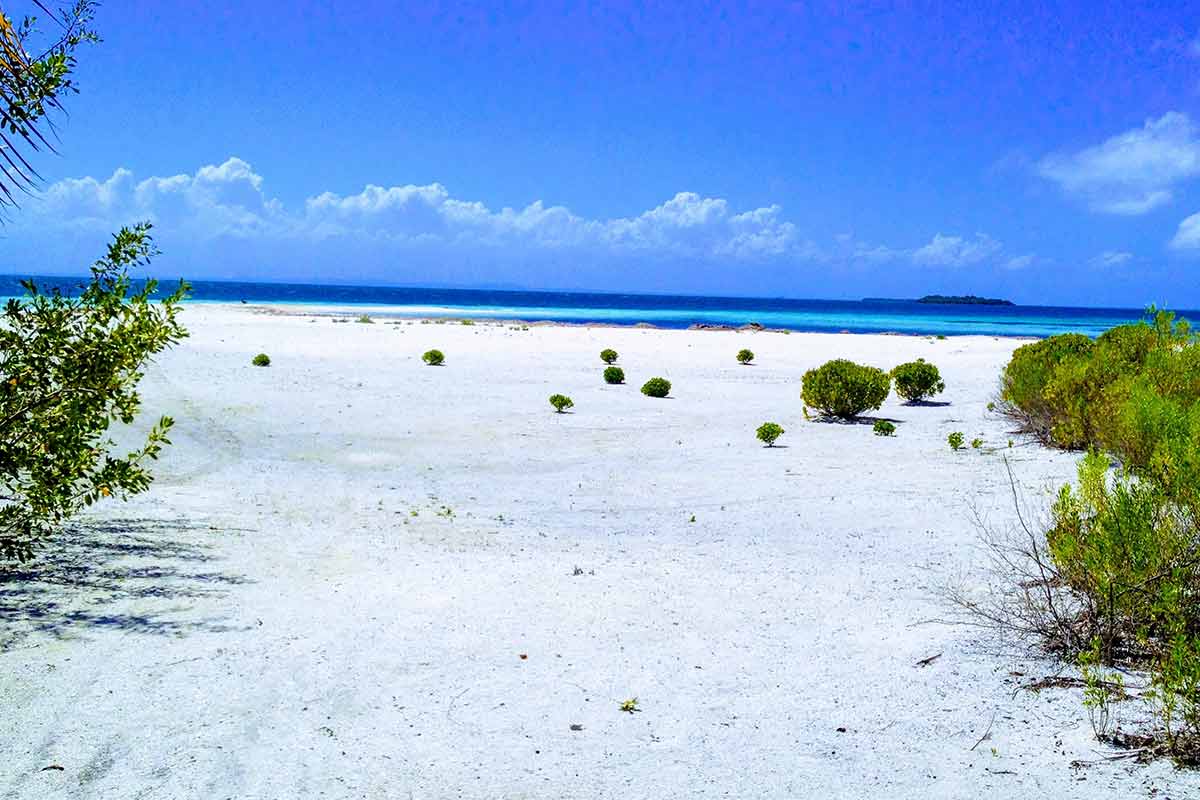
Varadero is 30 kilometers long and 22 kilometers are beaches, so it’s the perfect tropical town.
Playa Varadero is a must-visit, with its lovely white sands and crystal-clear waters it’s one of the most beautiful beaches you’ll see in Cuba.
There are luxurious all-inclusive beach hotels that make for a perfect stay and natural areas such as Cayo Blanco and the Cuevas de Bellamar.
Cuba Itinerary (2 Weeks)
Here we’ll now cover our very best itinerary of Cuba. As well as keeping an eye on time, it’s also been designed to keep things fresh and exciting too for you.
Havana (Days 1-5)
We’ll first kick off our Cuba itinerary by flying into the iconic capital that is Havana. Despite becoming somewhat touristy in recent years, this awesome Cuban city is still full of authenticity, culture and great things to do.
The first place you’ll want to head to is Havana Viejo, which is the historic centre and beating heart of the capital.
Here you’ll be able to visit the historically important Capitol, the Museum of the Revolution as well as the bustling San José Artisans Market.
Whilst in this area, be sure to have lunch at La Bodeguita del Medio, where you can snack on Cuban classics such as Crispy Yuca. It’s also a good place to kick off the night with specialities like the Mojito or Piña Colada.
When you’re tired of wandering Havana’s colourful streets, consider heading to Santa María del Mar. This off the beaten path beach is just a 30 minute drive east from Havana, and has some stunning blue waves to swim in as well as fresh coconuts on the go!
It’s a good idea to carry a solid Power Bank when heading to Cuba, given you’ll be in lesser connected areas, as well as spending lots of time out and about exploring!
Viñales (Days 6-8)
Next up we’ll head into the countryside, and into the popular town of Viñales. The bus from Havana will take around 3.5 hours.
This small, colonial town is known for its stunning natural landscapes that include steep mountains and lush green valleys.
With its own microclimate, the Viñales valley produces some of the best tobacco in the world, and is the main source for the Cuban cigars.
You can take a horseback ride into the valley, where you’ll be able to try the very best, as well as its rich coffee and other natural products.
Whilst the town is picturesque with its cute square and pebble-lined streets, the best things to see actually lie outside in the surrounding region.
These include the Mural de la Prehistoria, a 160m tall mural painted onto a limestone cliff, as well as La Cueva del Indio, a deep cave full of cool rock formations and sharp stalagmites.
Trinidad (Days 9-11)
After breathing in the fresh air from the countryside, we’ll now head to the lesser known, true gem of Cuba.
To get to Trinidad we’ll take the bus from Viñales which takes around 10 hours in total (including various stops along the way).
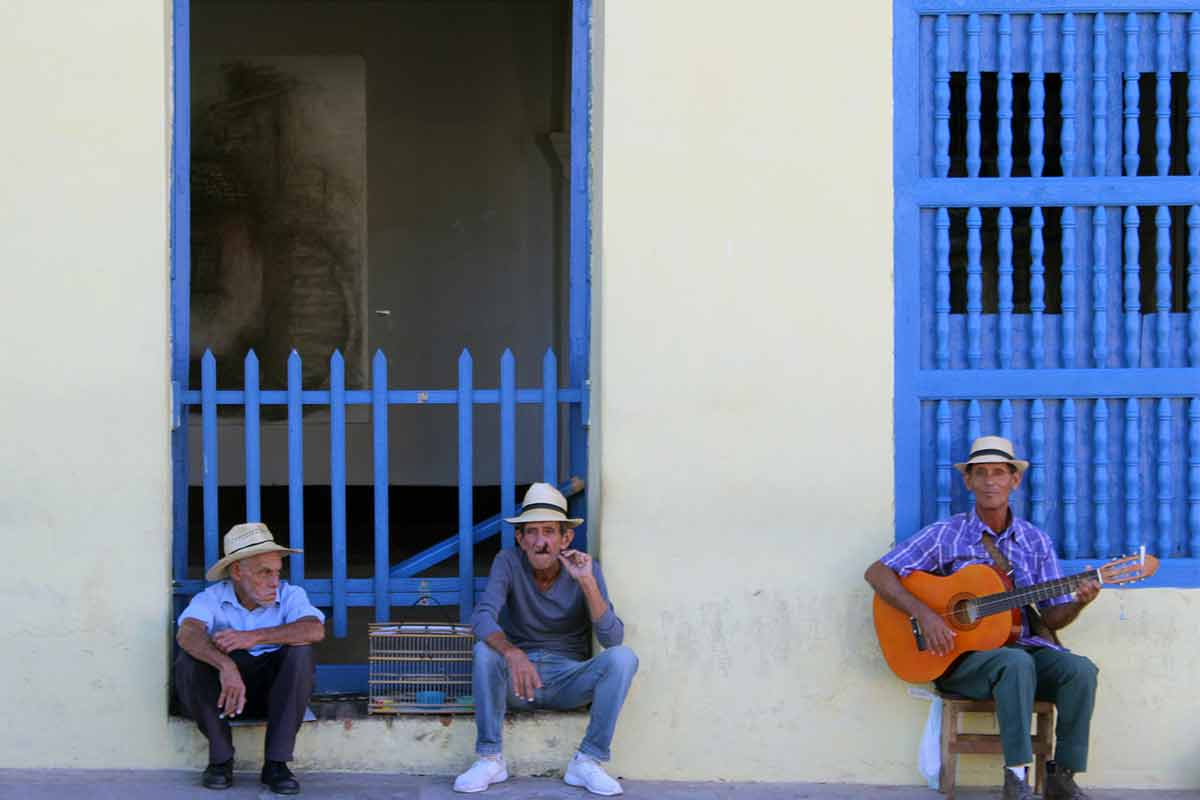
A UNESCO World Heritage Site, Trinidad is known for its picturesque plazas and colourful streets, and you could easily spend a whole day exploring every nook and cranny.
Plaza Mayor is a good place to start, and we recommend heading a few blocks north. Climb up the Bell Tower for some awesome views too.
Another must-do whilst in Trinidad is to head to Playa Ancón, which is one of the most beautiful beaches in the country and visit Disco Ayala, the most popular nightclub in Trinidad which is in a cave!
Varadero (Days 12-14)
Last but not least, it’s time for lounging on those postcard-perfect beaches that have been teasing you throughout your trip in Cuba!
The bus from Trinidad to Varadero will take around 7 hours, with a stop along the way in Santa Clara.
Varadero is the best place to let loose, and also relax on its multi-coloured Caribbean beaches.
Playa Varadero is by far the most notable, known for its long stretch of white sands, as well as many hotels and bars serving up whatever your heart desires.
When you’re not lounging on beaches and drinking the finest rum around, then why not explore a little more of Varadero?
The best things to do in town include visiting the market of Los Canayes to pick up some souvenirs, as well as heading on a day trip to the Varahicacos Ecological Reserve.
Here you can see lots of wildlife including exotic birds, iguanas and even sharks if you’re lucky!
And that’s all for our adventure through the stunning island of Cuba. From here we can take the 4 hour bus to Havana for our international flight out.
If you have the time, we recommend taking a cheap flight over to Cancún and start exploring the colourful and incredible country that is Mexico.
And there we have our 2 week Cuba itinerary. Now let’s move on to our most important tips, so you can have the best experience possible here.
Cuba: Travel + Safety Tips
As mentioned before, Cuba is relatively safe to visit but there are a few risks you should be aware of. Such as pickpocketing, theft, and scams.
These travel safety tips will make a big difference in your travel experience!
- Get travel insurance.
- Write down emergency numbers so you know who to call.
- Theft is rare in Cuba but always keep your valuables at home or the hotel safe. Be sure to take out travel insurance to protect you during your backpacking.
- Don’t forget to pack whatever medications you need.
- Keep your luggage protected and don’t neglect your bags when you’re out and about.
- You’ll come across many Casa Particulares in Cuba but also look out for the hostels in Cuba for the chance to meet like minded travelers etc.
- Rememeber to pack some mosquito repellent even though Cuba has less mosquitoes than other tropical backpacking destinations such as Costa Rica or Colombia it is still needed.
Staying safe while you travel is all about being prepared, doing your research, and using common sense. Do that and you will be fine.
Traveling Around Cuba
Traveling around Cuba by bus is not only cheap, but it’s also fast and it’s better than driving a rental car, considering that the roads are not in mint condition.
If you want to travel by bus, you can use Viazul or Transtur, the two bus companies in the country.
They offer regular connections between major cities and they will also take you to lesser-known vacation destinations.
The coaches are relatively modern and comfortable, and the prices range from $5 to $10 per 100 km of driving distance.
Their travel times are reliable and delays are not common, but make sure to do your research.
Best time to visit Cuba
Stretching around 400 miles in length, Cuba is a pretty big island. However, despite this, the Caribbean nation experiences a pretty similar tropical weather pattern in most of its top destinations. After all, it is located smack bang in the middle of the Caribbean Sea.
Havana is warm year-round, however, does have a pronounced dry and wet season that also affects temperatures. The dry season runs from November until April and is characterized by an average daily temperature of 71-73°F. Highs can reach up to 86°F, with lows of down to 61°F.
Rainfall at this time of year is at its lowest, making it ideal to explore the city and its nearby beaches. Only 10-40mm of rainfall per month can be expected during the dry season (with February the driest month of the year to visit).
The wet season in contrast is slightly hotter and wetter. Average daily temperatures range from 77-81°F, with highs of up to a toasty 90°F, and lows that circle around a still warm 68°F.
Rainfall is a lot heavier, with between 70-80mm falling for each (June and October are the wettest months of the year to visit the capital). We recommend bringing this zip-tight Poncho if coming in the wet season to keep yourself dry
Also important to mention here is that from September until October, there is an increased chance of hurricanes occurring (although they don’t tend to have such a big impact on Cuba compared to other countries in the region).
The southern gem of Santiago is another popular destination we’ll cover. Annual temperatures vary quite little here, with a daily average of between 80-83°F throughout the year. Highs can rise up to 90°F, with lows dipping to around 70°F.
Regardless of when you visit, you’ll want to carry lots of sunscreen as it will be pretty hot. Rainfall does vary a little more wildly along the southern coast of Cuba. December until March has barely any rain at all, making it a perfect time to sit back on the beach.
April and May see around 50mm of rainfall falling for each, with the rains dropping off again as the summer starts. With between 50-75mm, October is the wettest month to visit Santiago.
What to pack for Cuba
As we’ve seen, Cuba as a whole is a pretty warm destination to visit year-round.
When it comes to packing, this makes it quite easy to choose what to bring. You’ll mostly want light clothes and beach-wear for the days and evenings, and also a pair of trousers and shirt just in case.
Depending on when you visit, the rains might be quite heavy so if coming during the rainier seasons then make sure to bring a good waterproof coat.
As always you’ll also want to pack all of the essentials which includes toiletries, a document holder, towels, a water bottle as well as a daypack for any excursions you’ll be taking part in.
Got travel insurance for Cuba?
Backpacking Cuba: Final Words
Cuba is a magical place to visit. All you have to do is check your misconceptions at the door, take precautions, and be open to what the country has to offer.
You can refer back to this Cuba travel itinerary so you don’t miss anything of importance and have the best time!
Also, while you’re still here we invite you to read some of our other Caribbean travel guides to get more inspiration when it comes to exploring this paradise region.
👉🏽 P.S. If you’ve found this guide helpful, buy us a coffee here to say thanks! Or, support us by downloading our South America Travel Bible to get our best content.
“Dear traveler! Some links in this post contain affiliate links. Meaning, if you click through and make a purchase, book a hostel or sign up for a tour, we may earn a small commission at no additional cost to you. Your support means a lot and helps us to carry on traveling and maintaining the quality of this site for you.”

